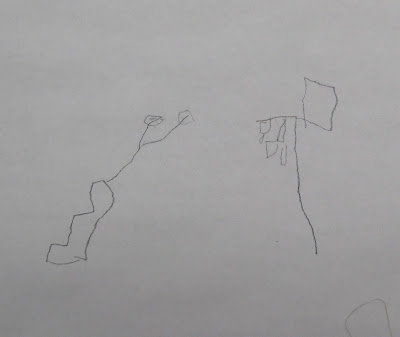I would show them their pictures and offer them the chance to draw themselves jumping to make a basket. Part of the invitation was to hand over my camera so they could use the screen shot for reference when drawing themselves in action.
However, the children did not have to climb the steps and jump for me to take an action shot because there were really many ways the children made baskets. For example, some children attempted to make baskets from the mat.
For documentation in the large muscle area, I often posted action shots of the children on the adjacent bulletin board. One of the pictures I displayed was the picture above of the two children on the tippy-toes attempting to dunk the ball.
Because I usually kept the basketball hoop up for two or three weeks in a row, the child saw the picture of himself making a basket when he came back the following week.
Not only did he see himself making the basket, he noticed how he made the basket. He made the basket by lifting his left leg in the air as he reached up on the toes of his right foot.
In the photo above, he looked as if he was studying the picture and recreating part of the action: the lifting of the left leg.
He then proceeded to go over to the basketball hoop to duplicate the very same basket from the week before.
To me this looked like what happens when people, who are trying to build a certain physical skill set, use stop-action shots to comprehend and evaluate their moves.So often in early childhood education we privilege a certain kind of representation, the kind illustrated by the child drawing himself making a basket. However, by privileging one kind of representation over another, we may not even think to offer invitations for children to use their body as tools to represent their engagement in the world around them.








No comments:
Post a Comment